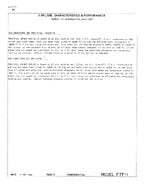Just reading through other forum threads discussing if the F6F Hellcat and/or F4U Corsair could escort 4 engined Bombers to Berlin and it got me wondering...
Could the P-65/F7F Tigercat be capable of doing the job as a long range fighter escort over NW Europe.
Keen to hear your thoughts!
Could the P-65/F7F Tigercat be capable of doing the job as a long range fighter escort over NW Europe.
Keen to hear your thoughts!

